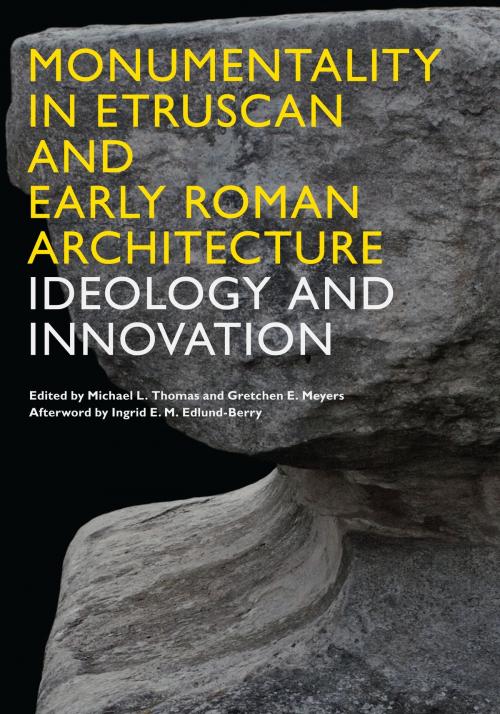Monumentality in Etruscan and Early Roman Architecture
Ideology and Innovation
Nonfiction, Social & Cultural Studies, Social Science, Archaeology| Author: | Ingrid E.M. Edlund-Berry | ISBN: | 9780292749825 |
| Publisher: | University of Texas Press | Publication: | November 1, 2012 |
| Imprint: | University of Texas Press | Language: | English |
| Author: | Ingrid E.M. Edlund-Berry |
| ISBN: | 9780292749825 |
| Publisher: | University of Texas Press |
| Publication: | November 1, 2012 |
| Imprint: | University of Texas Press |
| Language: | English |
Every society builds, and many, if not all, utilize architectural structures as markers to define place, patron, or experience. Often we consider these architectural markers as "monuments" or "monumental" buildings. Ancient Rome, in particular, is a society recognized for the monumentality of its buildings. While few would deny that the term "monumental" is appropriate for ancient Roman architecture, the nature of this characterization and its development in pre-Roman Italy is rarely considered carefully. What is "monumental" about Etruscan and early Roman architecture?Delving into the crucial period before the zenith of Imperial Roman building, Monumentality in Etruscan and Early Roman Architecture addresses such questions as, "What factors drove the emergence of scale as a defining element of ancient Italian architecture?" and "How did monumentality arise as a key feature of Roman architecture?" Contributors Elizabeth Colantoni, Anthony Tuck, Nancy A. Winter, P. Gregory Warden, John N. Hopkins, Penelope J. E. Davies, and Ingrid Edlund-Berry reflect on the ways in which ancient Etruscans and Romans utilized the concepts of commemoration, durability, and visibility to achieve monumentality. The editors' preface and introduction underscore the notion of architectural evolution toward monumentality as being connected to the changing social and political strategies of the ruling elites.By also considering technical components, this collection emphasizes the development and the ideological significance of Etruscan and early Roman monumentality from a variety of viewpoints and disciplines. The result is a broad range of interpretations celebrating both ancient and modern perspectives.
Every society builds, and many, if not all, utilize architectural structures as markers to define place, patron, or experience. Often we consider these architectural markers as "monuments" or "monumental" buildings. Ancient Rome, in particular, is a society recognized for the monumentality of its buildings. While few would deny that the term "monumental" is appropriate for ancient Roman architecture, the nature of this characterization and its development in pre-Roman Italy is rarely considered carefully. What is "monumental" about Etruscan and early Roman architecture?Delving into the crucial period before the zenith of Imperial Roman building, Monumentality in Etruscan and Early Roman Architecture addresses such questions as, "What factors drove the emergence of scale as a defining element of ancient Italian architecture?" and "How did monumentality arise as a key feature of Roman architecture?" Contributors Elizabeth Colantoni, Anthony Tuck, Nancy A. Winter, P. Gregory Warden, John N. Hopkins, Penelope J. E. Davies, and Ingrid Edlund-Berry reflect on the ways in which ancient Etruscans and Romans utilized the concepts of commemoration, durability, and visibility to achieve monumentality. The editors' preface and introduction underscore the notion of architectural evolution toward monumentality as being connected to the changing social and political strategies of the ruling elites.By also considering technical components, this collection emphasizes the development and the ideological significance of Etruscan and early Roman monumentality from a variety of viewpoints and disciplines. The result is a broad range of interpretations celebrating both ancient and modern perspectives.















